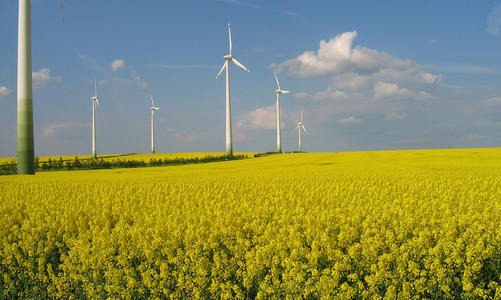With so many changes in the agriculture industry, advanced genetics will be key to better sustainability and higher yields
This past year, rapeseed production in EU climbed to a projected 17 million tonnes, exceeding initial expectations for the oil crop, according to Reuters. As the biggest oilseed crop in the EU, serving the food, the biodiesel fuel and livestock feed markets, the need for high-yielding and high-quality oilseed rape varieties is growing.
While the need for high oil crops is present, so are the challenges. Growers are enduring more droughts and high heat conditions, reduced access to pesticides and more pressure to decrease synthetic fertilizer. All in all, it’s going to take strong genetics to address these challenge and demand needs.
“With oilseed rape you can use all or nearly all breeding and genomic technologies invented,” says Dr. Carsten Oertel, Oilseed rape breeder at RAPOOL. “And on the worldwide scale, there are more than 1,000 groups doing research on oilseed rape.”
Because it takes 10 to 12 years to bring new varieties to market, the seeds farmers plant today are available because of the foresight of breeders more than one decade ago. In the same sense, breeders today are looking at pest, weather and consumer trends to predict genetic requirements one decade from now.
All genetic tweaks boil down to one key: Will it yield?
“As we know the world population is growing,” says Dr. Christian Flachenecker, Oilseed rape breeder for RAPOOL. “And now we’re also facing a reduction in the global surface of agricultural land due to degradation, soil sealing, etc. So, we need to harvest more from a given surface.”
Diseases, insects and weeds don’t care about growing populations and reduced hectares. It’s up to breeders to rise to the challenge of finding new varieties that showcase tolerances or resistance to common pests so yields continue to grow.
“One of the most important things we’re working on is insect resistance,” says Dr. Alexander Döring, Product management International at RAPOOL “Disease tolerance is something breeders are working on, too, but I’m excited for the possibility of resistance against the cabbage stem flea beetle or the pollen beetle, for example. Currently we are still in basic research, means that it will take many years until we can expect first varieties in the market”.
Whether it’s through traditional breeding techniques, novel genomic techniques of genetic engineering, breeders at RAPOOL-RING are exploring many solutions for oilseed rape.
Challenging Crop Genetics
There are few breeding programs that dedicate all of their time and energy into oilseed rape alone. However, RAPOOL-RING is one of the few, if not the only. This dedication means RAPOOLS’ understanding of this complex crop is second-to-none.
“In rapeseed we have more than 101,000 genes,” Oertel says. “This is more or less four times as much as human beings, we have 20,000 to 30,000. This gives you an idea of how complicated this crop really is.
“You need a team of different experts to do a good job bringing new products to market,” he continues. “From genomics, to knowledge of biology, to plant breeding knowledge, technology and data manage—it all has to work together.”
From the research side, It’s also a sizeable effort. Greenhouses, climate chambers and in-field trials are just a few of the steps RAPOOL-RING takes to narrow down their breeding pools to bring only the best new varieties to market.
“Our main selection steps are always in the field,” Flachenecker says. At the end of the day, the varieties need to work in real-world scenarios to prove they provide not only high yields but also return on investment for the farmers.
RAPOOL-RING March 2022






